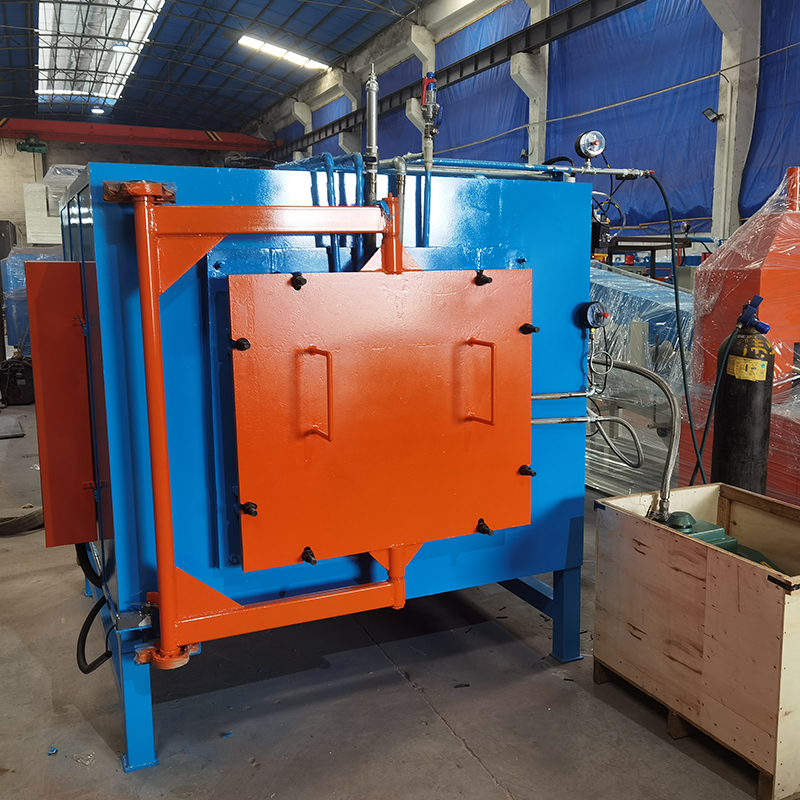Comparison between vacuum heat treatment and traditional heat treatment
Nov. 28, 2023
Vacuum heat treatment is a comprehensive technology that combines vacuum technology and heat treatment. It means that all and part of the heat treatment process are performed in a vacuum state. Vacuum heat treatment can realize almost all heat treatment processes, such as quenching, annealing, tempering, carburizing, and nitriding. In the quenching process, gas quenching, oil quenching, water quenching, etc. can be realized. Compared with ordinary heat treatment, it has the following advantages.
1. No oxidation, no decarburization, and no carburization, which has a good protective effect on the interior and surface of the workpiece.
Oxidation causes the metal surface to lose its metallic luster, increases surface roughness, and decreases precision. The oxide scale on the steel surface is often the source of quenching soft spots and quenching cracks. Oxidation reduces the strength of steel parts and reduces other mechanical properties. Decarburization refers to the phenomenon that the surface carbon content of steel decreases when it is heated.
Under normal circumstances, oxidation and decarburization of steel proceed simultaneously. Due to the oxidation of the decarburization layer, the reduction in carbon content will significantly reduce the quenching hardness, wear resistance, and fatigue properties of the steel. Decarburization of high-speed steel will reduce the red hardness.
In vacuum heat treatment, because the metal is heated under a certain degree of vacuum, the workpiece avoids contact with oxygen. The workpiece is not oxidized or decarburized, and a bright surface and good heat treatment quality can be obtained. At the same time, in a vacuum state, it will not When a reduction reaction occurs, carburization will not occur.
2. Improve overall mechanical properties, degassing and promote purification of metal surfaces
Vacuum has an obvious degassing effect on liquid metal and also has a good elimination effect on dissolved gases in solid metal. The most harmful gas in metals is hydrogen. When vacuum heating is used, the hydrogen in metals and alloys can be quickly reduced to a minimum, eliminating hydrogen embrittlement, thereby improving the plasticity, toughness and fatigue strength of the material, and improving the overall mechanical properties of the workpiece. When metals and alloys are heated in a vacuum, if the vacuum degree is lower than the decomposition pressure of the corresponding oxide, the oxide will decompose, and the free oxygen formed will be immediately discharged from the vacuum chamber, further improving the surface quality of the metal, and even making it The surface reaches an activated state and plays a purifying role.
3. Small deformation of workpiece
Generally speaking, the workpiece to be processed is heated by thermal radiation in the furnace. The temperature difference between the inside and outside is small and the thermal stress is small. Therefore, the parts processed by the vacuum heat treatment process have small deformation. At the same time, heating under vacuum and quenching under vacuum are completed automatically. , avoiding the transportation of workpieces in the air in a hot state (salt bath treatment and atmosphere protection treatment are heated in an anaerobic environment, but quenching is still completed in air or a quenching medium containing oxygen molecules), reducing artificial processing deformation . For example, the rolling wheel made of Cr12MoV is subjected to vacuum heat treatment and salt bath treatment respectively. The deformation of vacuum heat treatment is 70% smaller than that of salt bath treatment, and the product qualification rate is high.
4. Can reduce the volatility of gold elements in the workpiece
Vacuum heat treatment can heat and vacuum quench in a controlled atmosphere, thereby reducing the volatility of gold elements in the workpiece and ensuring the heat treatment quality of the workpiece.
5. Others
The vacuum heat treatment furnace has high thermal efficiency and can achieve rapid heating and cooling; it has good stability and repeatability. The working environment is good, the operation is safe, and there is no pollution or public hazard.










